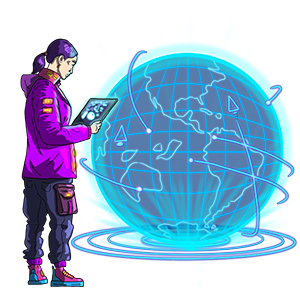There is an intricate relationship between internationalization and localization in video game development. Let’s delve into the essence of internationalization, its crucial role in achieving globalization, and how collaboration with localization specialists proves instrumental in identifying opportunities for seamless implementation.
What Is Internationalization?
Internationalization, often denoted as i18n (18 letters are between the “i” and the “n”), involves designing and developing products, applications, or document content to facilitate easy adaptation for diverse target audiences in terms of culture, region, or language. Best integrated from the outset, internationalization is a preemptive step that minimizes the need for costly re-engineering later. Notably, it doesn’t inherently involve content, application, or product localization but lays the groundwork for seamless migration if needed in the future.
Strategic Considerations in Internationalization

Integrating internationalization tools offers a few options and seeking the guidance of a specialist can provide valuable insights on where to focus efforts. Adapting an application for global audiences requires thoughtful consideration of language nuances, cultural distinctions, and technical implementations.
When engineering teams consider important aspects such as word order changes, page direction reversals, and specific handling of special characters in certain languages, they can efficiently internationalize the code from the start. This, in turn, streamlines the subsequent localization process.
Although localization follows internationalization, it’s rarely a straightforward task. Incorrectly translated words, phrases, or user interface (UI) elements are some of the inaccuracies localizers often find as they work on the translation process post-internationalization. Rectifying these issues may require additional development efforts to ensure comprehensive adaptation and customization for the target market.
The Benefits of Internationalization in Video Games
While distinct processes, internationalization and localization share the common objective of achieving globalization. Both are vital for optimizing games, software, or mobile applications across diverse locales and countries. Combining these processes streamlines software development for release in target markets.
A successful internationalization (i18n) policy extends beyond mere text translation. It entails adapting the entire game experience for diverse cultures.

Key benefits include:
- Facilitate global distribution: Proactively identify and address potential localization challenges, enhancing international distribution prospects.
- Early implementation of localization-friendly features. Embed characteristics and best practices from the outset to facilitate smooth localization.
- Code preparation for cultural preferences. Prepare the code to accommodate local, regional, cultural, and linguistic preferences, covering elements like time and date formats, currency systems, numbers, units, alphabets, and reading order.
- Distinction between code and localizable components. Clearly differentiate between code and localizable components, such as text strings and images.
- Scalability and competitive edge. Internationalization ensures scalability and provides a competitive edge by making the software adaptable to diverse markets.
The Takeaway
Mastering internationalization best practices is a technical necessity and is imperative for a video game’s global success. A thoughtful approach to internationalization ensures a game’s seamless adaptation, fostering a connection with diverse audiences and unlocking their full potential.
